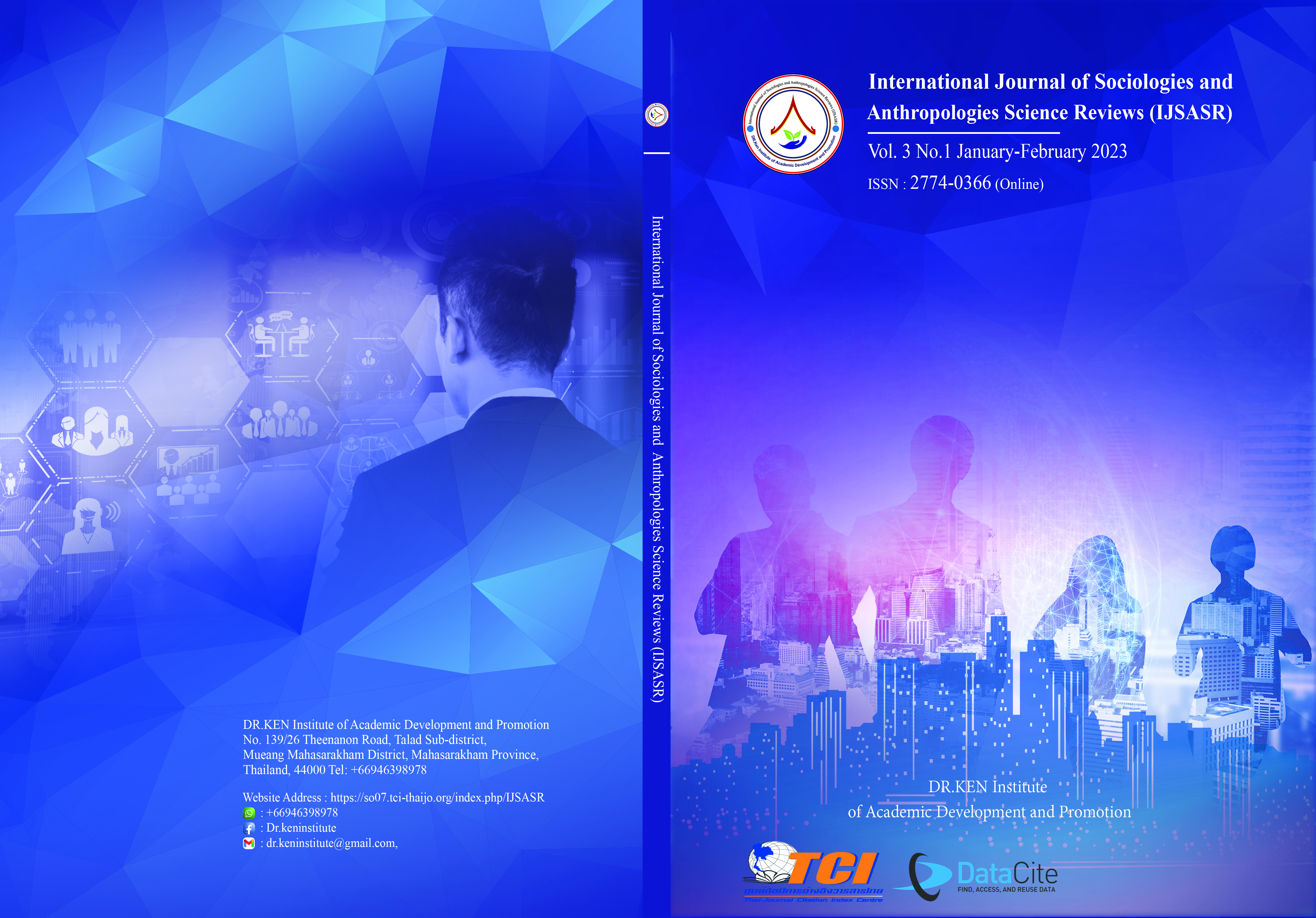Application of Design Thinking to the Organization’s Policy and Plan Department
Main Article Content
Abstract
Design thinking is a user-centered process aimed to solve problems correctly and involves stakeholders. This thinking concept tries to produce concrete outcomes that will fix problems while improving performance and creating innovation. In today’s world, government and private sectors adopt the concept. Its process is composed of five stages, namely empathize, define, ideate, prototype, and test. This article presents the concept application into the organization’s policy and plan department. Contents in this paper come from a literature review and reliable sources locally and internationally, then analyzed for application to the policy and planning department. The study found that Its policy and plan analysis follows two major stages when applying the concept. In the first stage, problems and work procedures are identified. First of all, the analyst empathizes with the target group who can voice out opinions. This is the stage where the analyst can understand and communicate with them from the beginning. Following this, the analyst defines major problems in order to design solutions, policies, and work procedures appropriately. The second stage is policy and work procedure drafting and comes after problems and solutions are identified concretely. This stage adopts ideating possibilities, prototyping policies or work procedures, and testing the prototype for feedback from stakeholders and further improvement. According to these mentioned stages, if the policy and plan analyst holds a discussion with colleagues and stakeholders from the start, positive results will be obtainable and affect the policy implementation and efficiency of the organization.
Article Details

This work is licensed under a Creative Commons Attribution-NonCommercial-NoDerivatives 4.0 International License.
Copyright on any article in the International Journal of Sociologies and Anthropologies Science Reviews is retained by the author(s) under the under the Creative Commons Attribution-NonCommercial-NoDerivatives 4.0 International License. Permission to use text, content, images, etc. of publication. Any user to read, download, copy, distribute, print, search, or link to the full texts of articles, crawl them for indexing, pass them as data to software, or use them for any other lawful purpose. But do not use it for commercial use or with the intent to benefit any business.

References
Beckman, S. L., & Barry, M. (2007). Innovation as a Learning Process: Embedding Design Thinking. California Management Review, 50(1), 25-56.
Brown, T. (2008). Design Thinking. Harvard Business Review, 86(6), 84.
Charoen, D. (2022). Problem-solving and Innovation with System Thinking and Design Thinking (Training materials). Center for Business Innovations NIDA Business School.
Design Management Institute. (2022). What is Design Thinking? Retrieved February 12, 2023, from https://www.dmi.org/page/WhatisDesignThink
Dolata, M., & Schwabe, G. (2016). Design Thinking in IS Research Projects. In Brenner, W. & Uebernickel, F. (Ed.), Design Thinking for Innovation: (pp. 67-83). Cham: Springer.
Dorst, K., & Cross, N. (2001). Creativity in the Design Process: co-evolution of problem-solution. Design Studies, 22(5), 425-437.
Fung, A. (2006). Varieties of Participation in Complex Governance. Public Administration Review, 66(s1), 66-75.
Han, E. (2022). What is design thinking and why is it important? Retrieved February 12, 2023, from https://online.hbs.edu/blog/post/what-is-design-thinking
Hrnote.asia. (2019). Design Thinking: An important tool for creating success for the organization. Retrieved November 25, 2022, from https://th.hrnote.asia/orgdevelopment/190702-design-thinking/
Israsena Na Ayudhya, P., & Treerattanaphan, C. (2018). Design thinking: learning by doing: Thailand Creative and Design Center (TCDC).
Jenkins, J., & Fife, T. (2014). Designing for disruption: Strategic business model innovation. In E. Bohemia, A. Rieple, J. Liedtka, & R. Cooper (Eds.), Proceedings of the 19th DMI: Academic Design Management Conference (pp. 2839–2855). The Design Management Institute.
Knight, E., Daymond, J., & Paroutis, S. (2020). Design-Led Strategy: How To Bring Design Thinking Into The Art of Strategic Management. California Management Review, 62(2), 30–52. https://doi.org/10.1177/0008125619897594
Laferriere, R. et al. (2019). Addressing Cognitive Challenges in Applying Design Thinking for Opportunity Discovery: Reflections from a Design Thinking Teaching Team. She Ji: The Journal of Design, Economics, and Innovation, 5(4), 383-386.
Liedtka, J., King, A. & Bennett, K. (2013). Solving Problems with Design Thinking: Ten Stories of What Works. New York: Columbia University Press.
Mahidol University. (2022). Job Description. Retrieved November 30, 2022, from http://intranet.mahidol/op/orpr/newhr/?page_id=221
Office of the Civil Service Commission. (2009). Policy and Planning Analyst. Retrieved November 30, 2022, from https://www.ocsc.go.th/sites/default/files/attachment/job_specification/3-1-012-1.pdf
Phetcharat, S. (2022). Improving journal service through design thinking case study, Thaksin University Library. Thaksin University Library Journal, 11(1),1-21.
Phitthayasenee, M., & Yuangsoi, P. (2021). Design thinking: New era innovator teachers. Lampang Rajabhat University Journal, 10(2). 190-199.
Rowe, P.G. (1991). Design Thinking. Cambridge: The MIT Press.
Shergold, P. (2015). Learning from Failure: Why Large Government Policy Initiatives Have Gone So Badly Wrong in the Past and How the Chances of Success in the Future Can be Improved. Canberra: Australian Public Service Commission.
Simon, H. A. (1969). The Sciences of Artificial. Cambridge: The MIT Press. 3rd edition: published in 1996)
Thailand Institute of Justice (Public Organization). (2019, August 6). Strategy & Planning Analyst. Retrieved November 30, 2022, from https://www.thaingo.org/jobs/detail/8452
The d.school. (2010). Bootcamp Bootleg. Stanford: Hasso Plattner Institute of Design
Thomke, S., & Feinberg, B. (2009). Design Thinking and Innovation at Apple.Harvard Business School Case 609-066.






